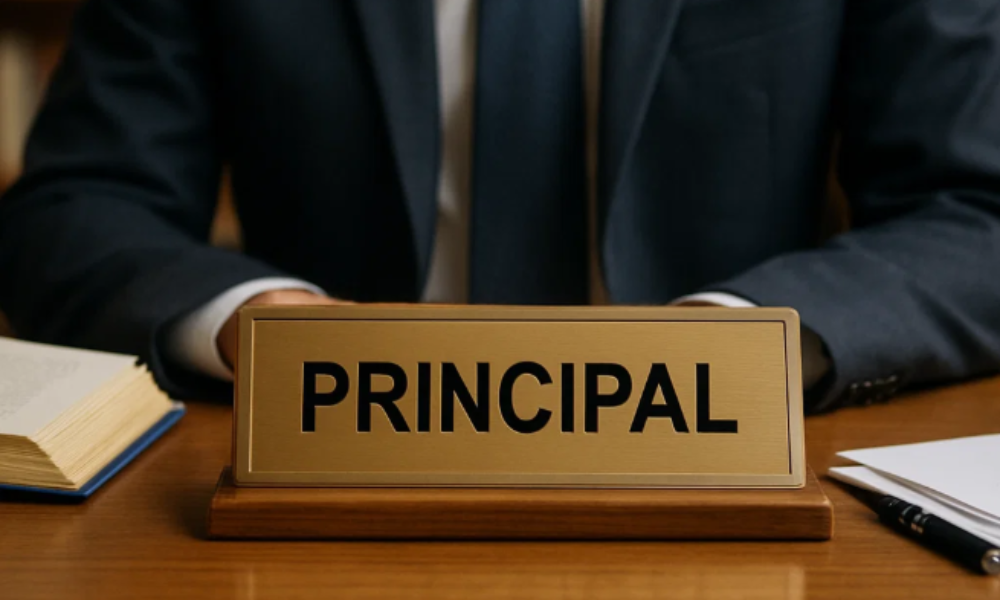
Research shows that Australia’s principals are among the most hardworking in the world.
According to the latest the Australian Principal Occupational, Health, Safety and Wellbeing Survey, school leaders are working 54.5 hours per week during term and 20.6 hours per week while on holidays.
However, a lot of this time is spent on paperwork – not students. School leaders spend a staggering 17–20 hours per week on administrative tasks and meetings, while just 9–12 hours per week is spent interacting with students and on instructional leadership.
While an overwhelming majority of principals report surprisingly high levels of job satisfaction and strong work commitment, they also highlight worsening levels of anxiety and depression amid unsustainable workloads, high levels of physical violence, threats, and bullying.
Alarmingly, 45% triggered red-flag emails – alerts generated when school leaders are at risk of self-harm, occupational health problems or serious impact on their quality of life.
Policy shifts offer hope
For the last 15 years, a national survey has been helping schools, communities and education policymakers keep a firm finger on the pulse of occupational principal health and wellbeing.
Led by Professor Theresa Dicke from the Australian Catholic University‘s (ACU) Institute for Positive Psychology and Education, with Professor Herb Marsh as the Co-Lead Investigator, the Australian School Leader Occupational Health & Wellbeing Survey addresses concerns about the growing demands and complexities impacting Australia’s school leaders.
Co-Investigator, ACU School of Education expert and former school principal Dr Paul Kidson says while there are early signs of progress that could see a plateauing in this year’s survey, genuine change will take time.
“There are a number of strategies being put in place to support leaders, however it will take some time before these will translate into clear outcomes,” Dr Kidson told The Educator. “But I’m optimistic that we’ll start to see a lessening of the deterioration we’ve been seeing in principal health and wellbeing.”
Dr Kidson said recent policy shifts reflect a growing recognition of the challenges that Australia’s school leaders face.
“There has been some great work done in recent years to address the pressures that school leaders have been facing, and I especially give credit to the state and territory education ministers signing off on the Better and Fairer School Funding Agreement which explicitly prioritises teacher and school leader wellbeing.”
The more who speak, the louder the message
With the stakes rising and school leadership roles becoming harder to fill, Dr Kidson said it’s never been more important for principals and other leaders to make their voices heard in the survey.
“One [reason] is that we’ve broadened the scope of the project. It’s not only focused on principals,” he said. “We’re now looking at how other leaders are doing, including deputy principals and the burgeoning growth area of middle leaders. In fact, this is one of the biggest concerns we have – those in the profession who are hesitant about signing up to become principals.”
Dr Kidson said the report will provide insights into what can be done for those who are coming through in that next wave.
“Another concern we have is that if the bureaucracy and the politicians don’t take the concerns of our school leaders seriously, fewer people will decide to choose the profession,” he said. “It’s always important to get as comprehensive a sample as we can. It makes the data we collect more compelling.”
Dr Kidson said that from Australia’s 10,000 or so schools, about a quarter of those principals take the survey each year.
“The scale and scope of the data we have is why policy makers and system leaders should pay very close attention to what school leaders are saying,” he said. “We would especially like rural, regional, and remote school leaders to participate, because they have additional concerns by virtue of their circumstance.”
The current state of play
When asked about how occupational principal health and wellbeing is tracking in 2025, Dr Kidson said the picture is mixed, but there are reasons to be cautiously optimistic.
“I approach this question from an optimistic viewpoint,” he said. “Generally speaking, I think there is a state of stasis regarding occupational principal health and wellbeing in Australia this year.”
Dr Kidson said the lingering effects of Covid are still being felt in schools, particularly around student behaviour.
“We have seen the acute impacts of Covid, naturally, over the past five years and even though we saw a promising reduction in violence and other offensive behaviours, over last couple of years, they’ve bounced back,” he said. “But I’m hopeful that this will stabilize.”
What is encouraging, says Dr Kidson, is that there has been a strong focus on improving behaviour in Australia’s schools.
“While recent media reports have highlighted a rise in suspensions within the public school system, what this also says is that systems are supporting principals to be more autonomous and take action against unacceptable behaviour in their schools,” he said.
“I think that with all the strategies that are being put in place, we’ll see progress, but this will take time.”
Dr Kidson said if this year’s report looks similar to last year’s one, he’d “take that as a win.”
“We just don’t want to see things going from bad to worse.”
The Australian School Leader Occupational Health & Wellbeing Survey will close in mid-to-late October.

